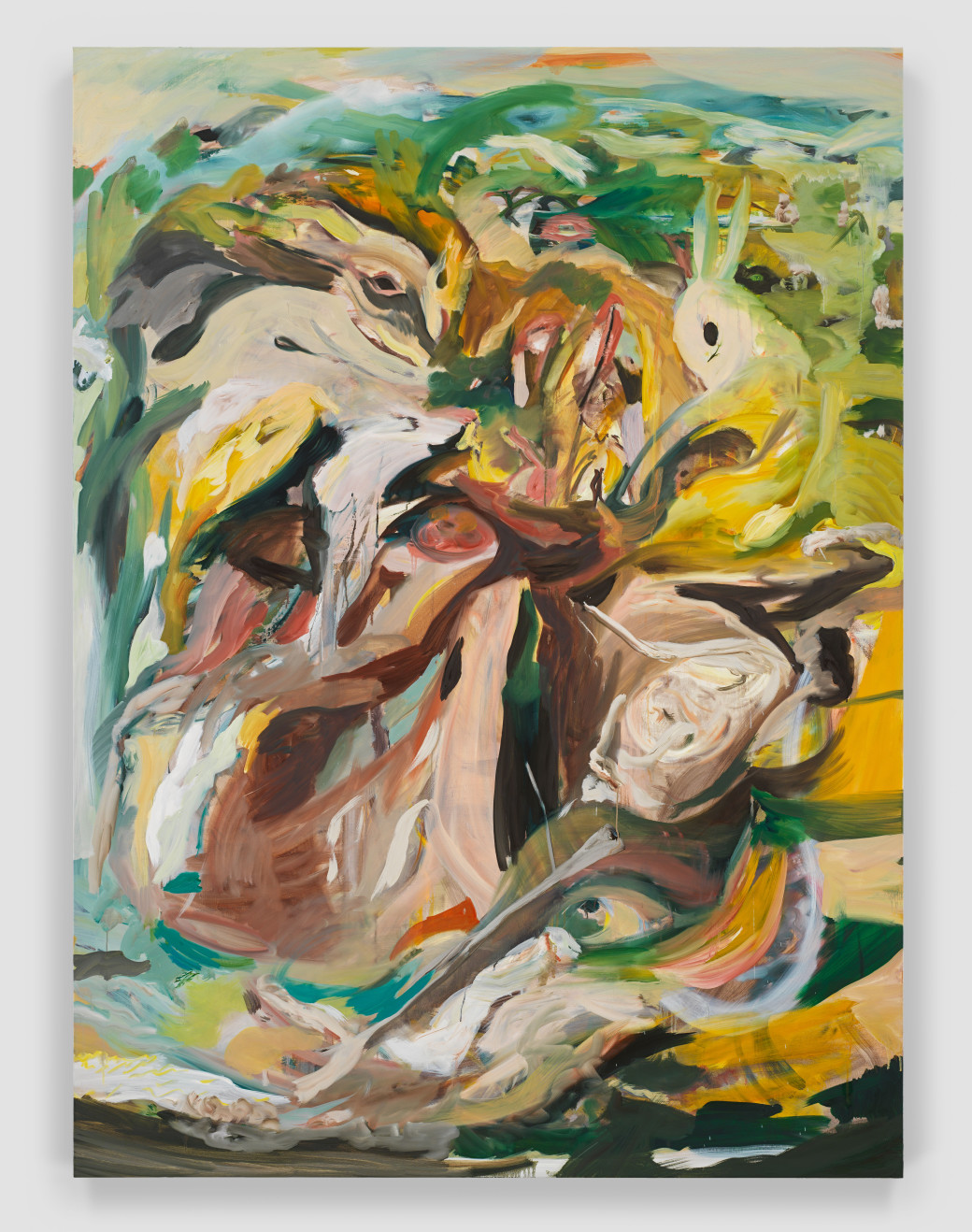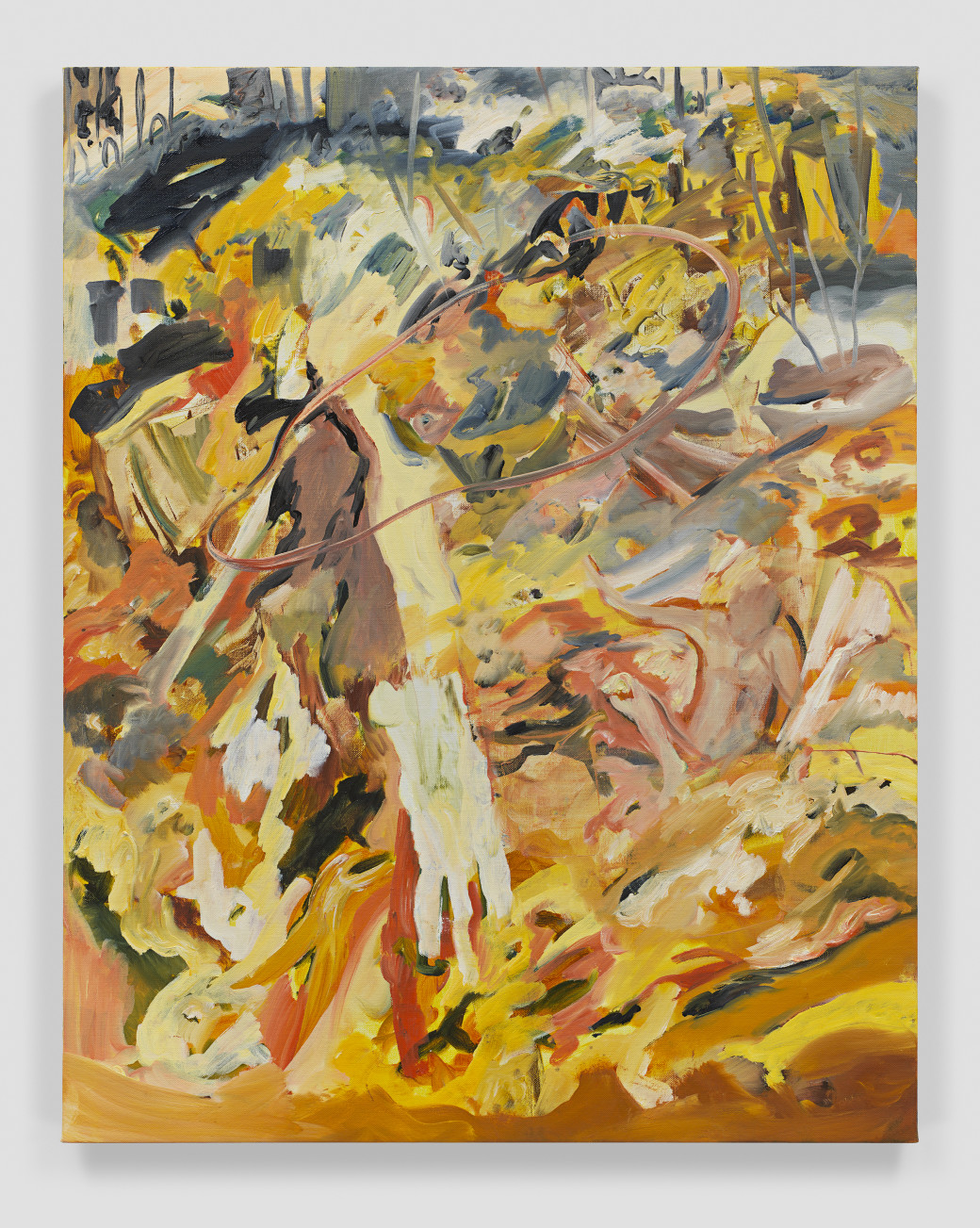Cecily Brown in Florence
Museo Novecento director Sergio Risaliti's interview with the artist on the occasion of his exhibition at the Museo Novecento and Palazzo Vecchio
Sergio Risaliti, director of the Museo Novecento, interviews Cecily Brown on our behalf, to coincide with her exhibition at the Museo Novecento and Palazzo Vecchio.
 Run Away Child, Running Wild (2022 -23) courtesy the artist and Thomas Dane
Run Away Child, Running Wild (2022 -23) courtesy the artist and Thomas DaneThe other day you told me about your first trip to Florence, do you remember?
My first trip was when I was seven, I remember going to the Uffizi and seeing Caravaggio’s Medusa. That was the work that most impacted me as a child. But my first proper, important visit to Florence was when I was a student, a young painter, aged 21. We were in Florence for just over a week, but I was so hungry to see everything. The funny thing is that back in Florence today I still have memories of that trip; I’m trying to recreate the impression I had at the time.
At Museo Novecento you’re showing works inspired by an engraving by Martin Schongauer, which also became a painting by the young Michelangelo. What was it about the image that aroused your interest?
For me it was the perfect marriage between image and meaning. The way it was made: the composition of the painting seems to contain its meaning. It doesn’t show it, but it’s there. The composition is so powerful: the figure of the saint in the centre, and the demons pulling at him.
I think tension is what I look for most in painting, it’s like feeling forces that are pulling in different directions; it may be that I translate it into an abstract language as well as a figurative one.
I think I was attracted to Schongauer’s work by its composition, but also its subject. Because it’s an eternal subject. I’ve always loved using universal subjects, showing that we’ve always been the same. People don’t change.
Some people don’t want to look at art from the past, but for me it’s always been very present; it always carries the same truth, the truth of being human. When I see Giotto’s bare feet, I realise they’re just like my own bare feet. The way bodies move, their muscles, their structure, are always the same, in the past or the present.
I was attracted by the colours too, and at the same time I love the demons. I like the fact that the painting is full of dark forces, danger and extremes. I also love that it’s terrifying yet at the same time really beautiful. It’s pleasing how this combination of opposing forces and tensions has always attracted me in painting. A lot of things in a single image.
 The aspiring subordinate, C. Brown
The aspiring subordinate, C. BrownYou’ve also installed a painting in Palazzo Vecchio, in a secret room with a frescoed ceiling. Why did you choose that specific piece, Body With Vulva, for the Camerino di Bianca Cappello?
I love the idea of a woman going home after a day’s work and stripping off, particularly in a place that once belonged to her lover. I think the colours and the grottesca decorations of the room echo the colours of the painting; it works perfectly.
In these rooms do you think about Bianca Cappello, the lover of Francesco I de’Medici?
Yes, and I like to think Francesco found Bianca Cappello just like the woman I painted in Body with Vulva, lying there waiting for him, admiring the ceiling decorations.
Two worlds coexist in your work, the figurative and iconographic world of the past, and the world of expressionist art in dialogue with modernism; but the coming together of the two universes is not only a synthesis, a sleight of hand, but the birth of a language that’s personal and unexpected. And that language is the reflection of your deepest soul. What’s your view?
I really like your interpretation, I’m glad you got all that.
You’ve said it’s important to you that the past is present in modern life, today. Past and present are not separate things.
Exactly, and this happens with things we see every day: today’s people, shops, adverts, everything exists in today’s world and blends with the past, with what already existed. When you travel to other cities, the past and the present come together.
This also comes out in my work, and it might be why I struggle to create still images. It’s why I always tend to the abstract. When an image is too still, I feel like it could really drive me mad.
The movement in my paintings translates the desire for something to be happening before your eyes. The more you look at a painting, the more you can get inside it.
In recent days we’ve talked about the coexistence between control and studied nonchalance. When you’re working, do you feel these two moments so differently?
It’s a mystery, because when I’m painting I’m not looking at what I’m doing. How can I know when it’s time to step away? Some days I feel my paintings aren’t turning out well, but then the next day they do. It’s not only a struggle, and even after all these years I don’t know when I’m more in control and when I’m more free. I think it’s the same as you feel with music or sport, the feeling of hitting the right note, or pushing your own limits.
My point of equilibrium is between control and freedom, both in the way I change the style, material and size of my canvases, and the way I express myself, so that things don’t stay too familiar. Now I’m working on new paintings without brushes, using painters’ rollers, and that’s exciting for me.
Partly because having seen my latest works displayed at the Metropolitan Museum of Art in New York I feel I’ve been doing the same thing for too long, using the same brushes and the same brush strokes. It’s time for a change.
Your paintings don’t come from the stomach, like a negative reaction to life…
My paintings are far more controlled than people think. I work fast, I don’t have a clear plan when I paint, I spend a lot of time looking. I have a painting brain, and I work with that. My body knows what to do.
You dance when you’re painting, right? But what do you listen to, Bach or Coltrane?
I dance when I’m painting my largest canvases. I listen to a bit of everything, but mainly punk and rock. These days I listen to Taylor Swift and Billie Eilish. As I said, a bit of everything. In the past I’d always avoided classical music, but these days I feel much freer, and I like that too.








